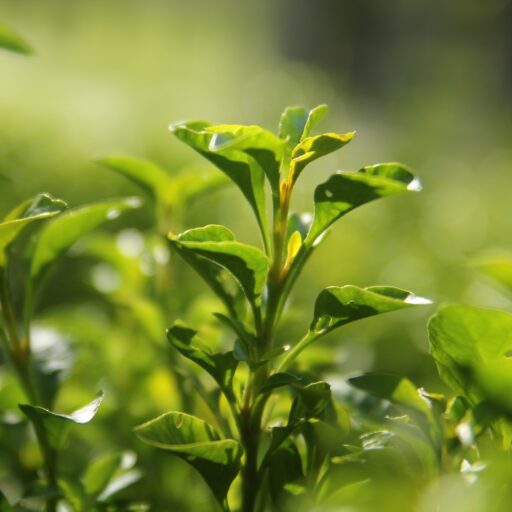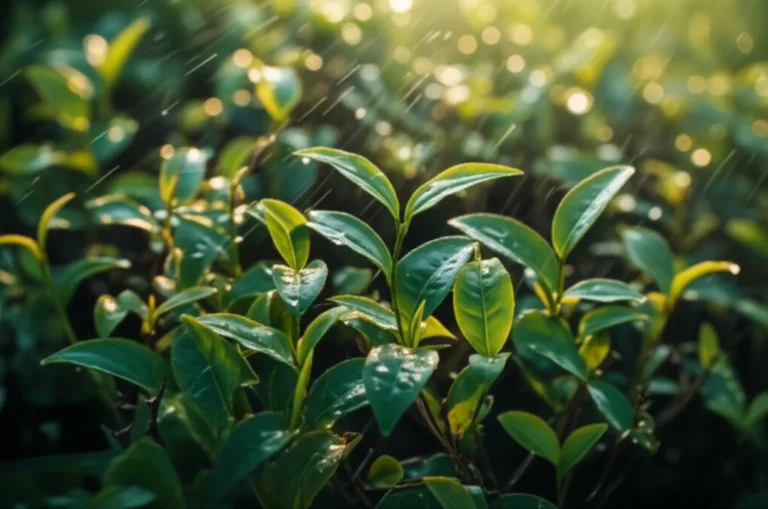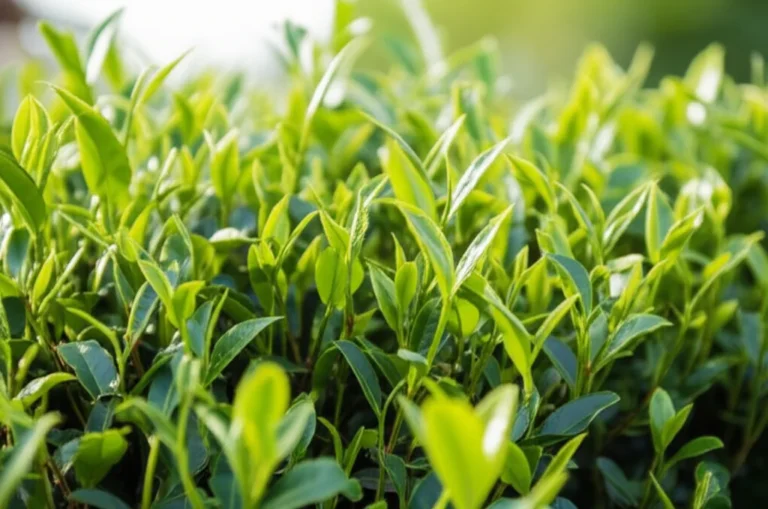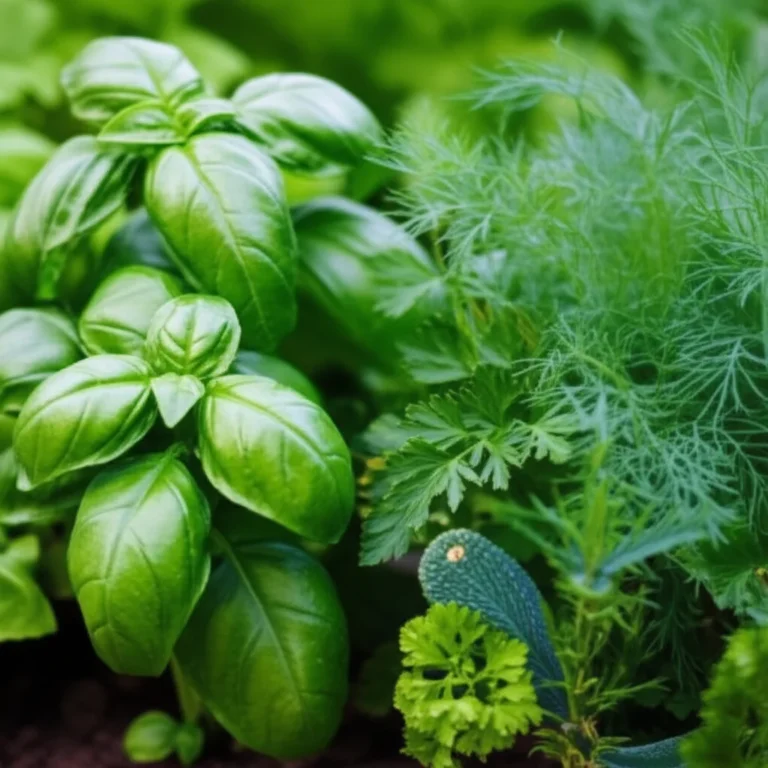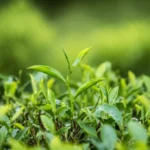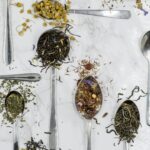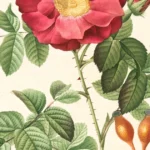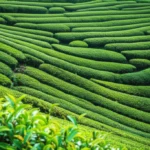Support our educational content for free when you purchase through links on our site. Learn more
21 Must-Know Herbs for Tea That Will Transform Your Brew 🍃 (2025)
Have you ever wondered what magical herbs you could brew into a cup of tea that not only tastes amazing but also boosts your health? At Growing Teas™, we’ve spent years cultivating and experimenting with a dazzling variety of herbs to create the ultimate list of herbs for tea — and trust us, it’s way more than just chamomile and peppermint! From ancient remedies like holy basil to exotic gems like rooibos, this guide will take you on a flavorful journey through 21 herbs that can elevate your tea game to new heights.
But here’s the kicker: did you know that the timing of your harvest and the way you dry your herbs can make or break the flavor and benefits of your brew? Stick around as we reveal insider tips on growing, harvesting, and blending these botanical wonders to craft your perfect cup. Ready to steep into a world of flavor and wellness? Let’s dive in!
Key Takeaways
- Discover 21 versatile herbs perfect for brewing flavorful and healthful teas, including peppermint, chamomile, ginger, and lesser-known treasures like burdock root and calendula.
- Learn the golden rules of harvesting, drying, and brewing to maximize flavor and therapeutic benefits.
- Explore custom herbal tea blends tailored for relaxation, digestion, immunity, and detox.
- Get practical advice on growing your own herbal tea garden even in small spaces or containers.
- Understand important safety considerations and how to store your herbs to keep them fresh.
- Find trusted sources to buy quality herbs and blends from brands like Mountain Rose Herbs, Traditional Medicinals, and Yogi Tea.
👉 Shop Quality Herbal Herbs & Teas:
- Mountain Rose Herbs on Amazon | Official Website
- Traditional Medicinals Herbal Tea on Amazon | Official Website
- Yogi Tea on Amazon | Official Website
Table of Contents
- 🌿 Welcome to the Wonderful World of Herbal Teas!
- ⚡️ Quick Tips and Facts for the Aspiring Herbalist
- 🕰️ A Sip Through Time: The Rich History of Herbal Infusions
- ✨ Why Brew Your Own Botanical Bliss? Unpacking the Benefits of Herbal Infusions
- 🍵 The Golden Rules of Herbal Tea Brewing: From Harvest to Cup
- 🌱 Our Top Picks: A Comprehensive List of 20+ Herbs for Tea & Their Wonders
- Peppermint (Mentha piperita): The Refreshing Revitalizer
- Chamomile (Matricaria chamomilla): The Calming Companion
- Ginger (Zingiber officinale): The Warming Warrior
- Lemon Balm (Melissa officinalis): The Sunny Soother
- Lavender (Lavandula angustifolia): The Aromatic Angel
- Rooibos (Aspalathus linearis): The South African Gem
- Hibiscus (Hibiscus sabdariffa): The Tart & Tangy Treat
- Echinacea (Echinacea purpurea): The Immune Ally
- Holy Basil (Ocimum tenuiflorum / Tulsi): The Adaptogenic Powerhouse
- Dandelion (Taraxacum officinale): The Detox Dynamo
- Nettle (Urtica dioica): The Nutrient-Rich Nurturer
- Rose Hips (Rosa canina): The Vitamin C Champion
- Valerian Root (Valeriana officinalis): The Deep Sleep Inducer
- Passionflower (Passiflora incarnata): The Tranquility Transformer
- Spearmint (Mentha spicata): The Milder Minty Marvel
- Lemongrass (Cymbopogon citratus): The Zesty Zing
- Fennel (Foeniculum vulgare): The Digestive Darling
- Licorice Root (Glycyrrhiza glabra): The Sweet Soother
- Burdock Root (Arctium lappa): The Cleansing Crusader
- Calendula (Calendula officinalis): The Golden Healer
- Bonus Brews: More Herbs to Explore!
- 🎨 Beyond the Single Herb: Crafting Custom Herbal Tea Blends for Every Mood
- 🏡 Growing Your Own Herbal Tea Garden: A Green Thumb’s Guide to Homegrown Bliss
- 🛒 Sourcing Your Botanical Treasures: Where to Buy Quality Herbs for Tea
- ⚠️ Safety First! Important Considerations & Potential Side Effects of Herbal Teas
- 🔒 Herbal Tea Storage Secrets: Keeping Your Brews Fresh and Potent
- ✅ Conclusion: Your Journey into the World of Herbal Teas
- 🔗 Recommended Links for Further Exploration
- ❓ FAQ: Your Most Pressing Herbal Tea Questions Answered
- 📚 Reference Links
⚡️ Quick Tips and Facts for the Aspiring Herbalist
Welcome to the first sip of your herbal tea journey! At Growing Teas™, we’ve spent years cultivating not just traditional tea leaves but also a vibrant garden of herbs perfect for brewing your own healing and flavorful infusions. Whether you’re a newbie or a seasoned tea grower, here are some quick tips and fascinating facts to get you started:
- Herbal teas are technically tisanes, meaning they are infusions made from herbs, flowers, roots, or fruits — not from the tea plant (Camellia sinensis). This means zero caffeine in most cases! ☕❌
- The flavor and benefits of herbal teas depend heavily on harvesting at the right time and proper drying/storage. Freshness is key to unlocking their full potential.
- Many herbs like chamomile, peppermint, and lemon balm are easy to grow in your backyard or even in pots on a sunny windowsill.
- Herbal teas can be therapeutic but always check for allergies or interactions, especially if you’re pregnant or on medication. Safety first! ⚠️
- Brewing times vary: delicate flowers like chamomile need only 5 minutes, while roots like ginger or licorice may require 10-15 minutes for full flavor and benefits.
- Herbal teas are a fantastic way to hydrate and nourish your body with antioxidants, vitamins, and minerals — often with delightful flavors and aromas.
For a deep dive into starting your own tea garden, check out our detailed guide: Starting a Backyard Tea Farm: 15 Expert Tips for Your Own Brew 🍃.
Ready to explore the roots and leaves of herbal tea history? Let’s steep into the past next!
🕰️ A Sip Through Time: The Rich History of Herbal Infusions
Herbal teas have been humanity’s natural remedy and comfort drink for thousands of years — long before the green, black, or oolong teas we know today. Ancient civilizations from Egypt to China and the Americas brewed herbal infusions for health, ritual, and pleasure.
Ancient Origins and Traditions
- Egyptians used chamomile for its calming and anti-inflammatory properties as early as 1500 BCE.
- In Traditional Chinese Medicine (TCM), herbs like ginger, licorice root, and ginseng have been staples for balancing the body’s energy (Qi) for millennia.
- Native American tribes brewed herbs such as sage and peppermint for medicinal and ceremonial purposes.
- The Ayurvedic tradition in India venerates tulsi (holy basil) and ashwagandha as adaptogens that help the body cope with stress.
Herbal teas have always been more than just drinks — they are a bridge between nature and wellness, steeped in culture and science. For more on tea history, visit our History of Tea section.
✨ Why Brew Your Own Botanical Bliss? Unpacking the Benefits of Herbal Infusions
Why bother growing and brewing your own herbal teas when you can buy bags at the store? Because nothing beats the freshness, control, and connection you get from your own garden! Here’s why we’re passionate about cultivating herbs for tea:
Health Benefits Galore
- Antioxidants: Many herbs like hibiscus, rooibos, and rose hips are rich in antioxidants that fight free radicals and support immune health.
- Digestive Aid: Peppermint, ginger, and fennel teas soothe upset stomachs and promote healthy digestion.
- Stress Relief & Sleep: Chamomile, lavender, and valerian root are beloved for their calming effects and sleep support.
- Anti-inflammatory & Detox: Herbs such as dandelion and burdock root help support liver function and reduce inflammation.
- Vitamin Boost: Rose hips and nettle provide vitamin C, iron, and other nutrients that nourish your body.
Beyond Health: Flavor & Ritual
- Brewing your own blends allows you to customize flavors and aromas — from zesty lemon balm to sweet licorice root.
- The ritual of harvesting, drying, and brewing connects you to nature and slows down the hectic pace of modern life.
For more on the health perks, explore our Health Benefits of Tea articles.
🍵 The Golden Rules of Herbal Tea Brewing: From Harvest to Cup
Getting the perfect cup of herbal tea is an art and a science. Here’s how we at Growing Teas™ approach it:
Harvesting
- Pick herbs early in the morning after the dew evaporates — this is when essential oils are most potent.
- Harvest leaves before flowering for the best flavor; flowers themselves should be picked when fully open.
- Roots and barks are best harvested in fall or early spring when the plant’s energy is concentrated underground.
Drying & Storage
- Dry herbs in a dark, well-ventilated area on screens or hang in small bunches.
- Avoid direct sunlight to preserve color and essential oils.
- Store dried herbs in airtight containers away from heat and light.
Brewing Tips
| Herb Type | Water Temp | Steep Time | Notes |
|---|---|---|---|
| Flowers (Chamomile, Lavender) | 200°F (just off boil) | 5-7 min | Delicate, avoid over-steeping |
| Leaves (Peppermint, Lemon Balm) | 212°F (boiling) | 7-10 min | Full flavor extraction |
| Roots (Ginger, Licorice) | 212°F (boiling) | 10-15 min | Longer steeping for potency |
| Seeds (Fennel, Anise) | 212°F (boiling) | 10 min | Crush seeds slightly for release |
Pro tip: Use filtered water and cover your cup or teapot while steeping to trap volatile oils and aromas.
🌱 Our Top Picks: A Comprehensive List of 20+ Herbs for Tea & Their Wonders
Ready to meet your new garden friends? Here’s our curated list of the most popular and beneficial herbs for tea, complete with their botanical names and key benefits. We’ve included some personal anecdotes from our tea growers too!
1. Peppermint (Mentha piperita): The Refreshing Revitalizer
- Flavor: Cool, minty, invigorating.
- Benefits: Eases digestion, relieves headaches, soothes colds, boosts energy.
- Growing Tips: Thrives in partial shade; invasive, so plant in containers.
- Anecdote: Our lead grower swears by a peppermint infusion after long fieldwork — it’s like a natural espresso shot!
2. Chamomile (Matricaria chamomilla): The Calming Companion
- Flavor: Sweet, apple-like, floral.
- Benefits: Promotes relaxation, eases insomnia, anti-inflammatory.
- Growing Tips: Prefers full sun and well-drained soil.
- Fun Fact: Chamomile tea was a bedtime staple in our family for generations.
3. Ginger (Zingiber officinale): The Warming Warrior
- Flavor: Spicy, warming, slightly sweet.
- Benefits: Relieves nausea, aids digestion, anti-inflammatory.
- Growing Tips: Needs warm, humid conditions; can be grown indoors in pots.
- Pro Tip: Slice fresh ginger and steep for a zesty kick or dry for a milder brew.
4. Lemon Balm (Melissa officinalis): The Sunny Soother
- Flavor: Bright, lemony, fresh.
- Benefits: Reduces anxiety, improves sleep, supports digestion.
- Growing Tips: Easy to grow; can spread rapidly.
- Story: We love adding lemon balm to our evening blends for a citrusy calm.
5. Lavender (Lavandula angustifolia): The Aromatic Angel
- Flavor: Floral, sweet, slightly herbaceous.
- Benefits: Relieves stress, improves sleep, soothes headaches.
- Growing Tips: Requires full sun and well-drained soil.
- Tip: Use sparingly in blends to avoid overpowering.
6. Rooibos (Aspalathus linearis): The South African Gem
- Flavor: Earthy, sweet, nutty.
- Benefits: Rich in antioxidants, supports heart health, caffeine-free.
- Growing Tips: Difficult to grow outside South Africa; best sourced from reputable suppliers.
- Note: Rooibos is a fantastic base for herbal blends.
7. Hibiscus (Hibiscus sabdariffa): The Tart & Tangy Treat
- Flavor: Tart, cranberry-like.
- Benefits: Lowers blood pressure, rich in vitamin C, antioxidant-rich.
- Growing Tips: Prefers warm climates; harvest calyces after flowering.
- Fun Fact: Our tea farm’s hibiscus patch attracts hummingbirds!
8. Echinacea (Echinacea purpurea): The Immune Ally
- Flavor: Mildly floral, earthy.
- Benefits: Boosts immune function, may reduce cold duration.
- Growing Tips: Prefers full sun and well-drained soil.
- Pro Tip: Use fresh or dried flowers and roots for tea.
9. Holy Basil (Ocimum tenuiflorum / Tulsi): The Adaptogenic Powerhouse
- Flavor: Spicy, clove-like, slightly sweet.
- Benefits: Reduces stress, anti-inflammatory, supports immunity.
- Growing Tips: Needs warm climate, full sun.
- Story: Tulsi tea is a sacred brew in India, and we love its uplifting aroma.
10. Dandelion (Taraxacum officinale): The Detox Dynamo
- Flavor: Earthy, slightly bitter.
- Benefits: Supports liver detox, diuretic, anti-inflammatory.
- Growing Tips: Grows wild easily; harvest leaves or roots.
- Tip: Roast roots for a coffee-like infusion.
11. Nettle (Urtica dioica): The Nutrient-Rich Nurturer
- Flavor: Green, grassy, slightly spinach-like.
- Benefits: Rich in vitamins A, C, iron; supports allergies and inflammation.
- Growing Tips: Harvest young leaves carefully (wear gloves!).
- Anecdote: Our herbalist swears by nettle tea during allergy season.
12. Rose Hips (Rosa canina): The Vitamin C Champion
- Flavor: Tart, fruity.
- Benefits: High in vitamin C, antioxidant, supports skin and immunity.
- Growing Tips: Harvest after first frost for best flavor.
- Fun Fact: Rose hip tea was a wartime vitamin C source in Europe.
13. Valerian Root (Valeriana officinalis): The Deep Sleep Inducer
- Flavor: Earthy, pungent.
- Benefits: Promotes sleep, reduces anxiety.
- Growing Tips: Prefers moist, rich soil.
- Warning: Strong aroma; use in blends or alone with caution.
14. Passionflower (Passiflora incarnata): The Tranquility Transformer
- Flavor: Mild, slightly sweet.
- Benefits: Reduces anxiety, improves sleep quality.
- Growing Tips: Needs warm climate, climbing support.
- Tip: Combine with chamomile for a potent sleep blend.
15. Spearmint (Mentha spicata): The Milder Minty Marvel
- Flavor: Sweet minty.
- Benefits: Aids digestion, freshens breath.
- Growing Tips: Like peppermint, grows vigorously.
- Pro Tip: Use fresh leaves for a bright flavor.
16. Lemongrass (Cymbopogon citratus): The Zesty Zing
- Flavor: Citrusy, lemony.
- Benefits: Reduces anxiety, aids digestion, antimicrobial.
- Growing Tips: Needs warm climate, full sun.
- Story: A staple in our summer iced herbal blends.
17. Fennel (Foeniculum vulgare): The Digestive Darling
- Flavor: Sweet, anise-like.
- Benefits: Relieves bloating, supports digestion.
- Growing Tips: Easy to grow; harvest seeds and leaves.
- Tip: Crush seeds before brewing for full flavor.
18. Licorice Root (Glycyrrhiza glabra): The Sweet Soother
- Flavor: Sweet, slightly woody.
- Benefits: Soothes sore throat, aids digestion.
- Growing Tips: Requires patience; roots take years to mature.
- Warning: Not for long-term use in high doses due to blood pressure concerns.
19. Burdock Root (Arctium lappa): The Cleansing Crusader
- Flavor: Earthy, mild.
- Benefits: Supports liver detox, anti-inflammatory.
- Growing Tips: Harvest roots in fall.
- Pro Tip: Roast for a richer flavor.
20. Calendula (Calendula officinalis): The Golden Healer
- Flavor: Mild, slightly peppery.
- Benefits: Anti-inflammatory, supports skin health.
- Growing Tips: Easy to grow; harvest petals.
- Fun Fact: Calendula petals add a beautiful golden hue to blends.
21. Bonus Brews: More Herbs to Explore!
- Sage (Salvia officinalis): Brain health and digestion.
- Rosemary (Rosmarinus officinalis): Memory and circulation.
- Thyme (Thymus vulgaris): Antimicrobial and respiratory support.
- Elderflower (Sambucus nigra): Cold and flu relief.
- Butterfly Pea Flower (Clitoria ternatea): Antioxidant-rich, color-changing tea.
🎨 Beyond the Single Herb: Crafting Custom Herbal Tea Blends for Every Mood
Why settle for one herb when you can create a symphony of flavors and benefits? At Growing Teas™, we love experimenting with blends that balance taste and wellness.
Blend Ideas to Try
- Relaxation Blend: Chamomile + Lavender + Lemon Balm
- Digestive Aid: Peppermint + Ginger + Fennel
- Immune Booster: Echinacea + Rose Hips + Elderflower
- Energy Lift: Holy Basil + Spearmint + Lemon Grass
- Detox & Cleanse: Dandelion Root + Burdock Root + Nettle
Tips for Blending
- Start with a base herb (mild flavor, e.g., rooibos or chamomile).
- Add flavor enhancers (peppermint, lemon balm).
- Include functional herbs for health benefits.
- Experiment with ratios; steep small batches to test.
For more on blending, see our DIY Tea Blending guides.
🏡 Growing Your Own Herbal Tea Garden: A Green Thumb’s Guide to Homegrown Bliss
Nothing beats the joy of sipping tea made from your own garden! Here’s how to get started:
Choosing Your Herbs
- Pick herbs suited to your climate and space.
- Start with easy growers like peppermint, chamomile, and lemon balm.
- Consider container gardening for invasive species like mint.
Soil and Sunlight
- Most herbs prefer well-drained soil and full sun (6+ hours).
- Some, like mint and lemon balm, tolerate partial shade.
Planting and Care
- Sow seeds or start from seedlings.
- Water regularly but avoid waterlogging.
- Harvest leaves and flowers regularly to encourage growth.
Harvesting Tips
- Harvest in the morning after dew dries.
- Use sharp scissors to avoid damaging plants.
- Dry herbs properly to preserve flavor and potency.
For a detailed planting guide, visit our Herbal Tea Planting section.
🛒 Sourcing Your Botanical Treasures: Where to Buy Quality Herbs for Tea
If you can’t grow everything yourself, sourcing quality herbs is essential. Here’s what we recommend:
Trusted Online Retailers
- Mountain Rose Herbs: Organic, sustainably sourced herbs.
- Starwest Botanicals: Wide selection, high quality.
- Frontier Co-op: Organic and fair-trade options.
Specialty Tea Brands
- Traditional Medicinals: Known for herbal wellness teas.
- Yogi Tea: Popular blends with herbs like tulsi and ginger.
- Artful Tea: Beautiful single-herb and blended herbal teas.
Local Farmers Markets & Herb Shops
- Support local growers for fresh, seasonal herbs.
- Ask about organic and pesticide-free practices.
👉 CHECK PRICE on:
- Mountain Rose Herbs: Amazon | Mountain Rose Herbs Official Website
- Traditional Medicinals Herbal Tea: Amazon | Traditional Medicinals Official Site
- Yogi Tea: Amazon | Yogi Tea Official Site
⚠️ Safety First! Important Considerations & Potential Side Effects of Herbal Teas
Herbal teas are generally safe but remember:
- Consult your healthcare provider before using herbal teas for medicinal purposes, especially if pregnant, nursing, or on medication.
- Some herbs like licorice root can raise blood pressure if consumed in excess.
- Allergies are possible; test new herbs in small amounts.
- Avoid herbs like kava or comfrey without professional guidance due to potential toxicity.
- Children and pets may react differently; keep herbs out of reach.
For detailed safety info, check out our Health Benefits of Tea safety articles.
🔒 Herbal Tea Storage Secrets: Keeping Your Brews Fresh and Potent
To savor your herbal teas at their best:
- Store dried herbs in airtight, opaque containers to protect from moisture and light.
- Keep in a cool, dry place away from heat sources.
- Label containers with harvest date; use within 6-12 months for peak flavor.
- Avoid storing near spices or strong-smelling foods to prevent flavor contamination.
✅ Conclusion: Your Journey into the World of Herbal Teas
Well, there you have it — a bountiful bouquet of herbs ready to transform your tea experience from ordinary to extraordinary! From the cooling zest of peppermint to the calming embrace of chamomile, and the immune-boosting power of echinacea to the detoxifying magic of dandelion root, herbal teas offer a vast playground of flavors and wellness benefits.
At Growing Teas™, we wholeheartedly recommend growing your own herbal tea garden if you can — it’s a rewarding adventure that connects you with nature and lets you craft fresh, personalized blends. But if gardening isn’t your thing, sourcing quality herbs from trusted suppliers like Mountain Rose Herbs or Traditional Medicinals ensures you still get the best brews.
Remember the golden rules of harvesting, drying, and brewing to unlock the full potential of your herbs. And don’t be shy about experimenting with blends — your perfect cup might just be a few herbs away!
So, whether you’re steeping a single herb or blending a symphony of botanicals, your cup is a vessel of history, health, and happiness. Cheers to your herbal tea journey — may it be as rich and refreshing as the brews you create! 🍵✨
🔗 Recommended Links for Further Exploration
👉 Shop Quality Herbal Tea Herbs and Blends:
-
Mountain Rose Herbs (Organic Herbs):
Amazon | Mountain Rose Herbs Official Website -
Traditional Medicinals Herbal Tea Collection:
Amazon | Traditional Medicinals Official Site -
Yogi Tea Herbal Blends:
Amazon | Yogi Tea Official Site
Books to Deepen Your Herbal Tea Knowledge:
-
The Herbal Tea Book: Simple Blends for Health and Wellness by Sarah Farr
Amazon Link -
The Tea Book: All Things Tea by Louise Cheadle & Nick Kilby
Amazon Link -
The Complete Book of Herbal Tea by Natalie Savona
Amazon Link
❓ FAQ: Your Most Pressing Herbal Tea Questions Answered
What are the best herbs for making herbal tea at home?
The best herbs depend on your taste and health goals, but some easy-to-grow and versatile favorites include:
- Peppermint: Refreshing and digestive.
- Chamomile: Calming and sleep-promoting.
- Lemon Balm: Uplifting and soothing.
- Lavender: Stress-relieving and aromatic.
- Ginger: Warming and anti-inflammatory.
These herbs are widely available, grow well in many climates, and offer a broad spectrum of benefits. Starting with these ensures a rewarding home tea experience.
How do I dry and store herbs for tea to preserve their flavor and aroma?
Drying and storage are crucial for maintaining your herbs’ potency:
- Drying: Harvest in the morning after dew dries. Use a dark, well-ventilated spot to air-dry herbs on screens or hang in small bunches. Avoid direct sunlight to protect essential oils.
- Storage: Store dried herbs in airtight, opaque containers away from heat, moisture, and light. Label with the harvest date and use within 6-12 months for best flavor.
- Tip: Avoid storing near spices or strong odors to prevent flavor contamination.
Proper drying and storage preserve the delicate flavors and therapeutic compounds that make your herbal teas special.
Can I grow my own herbs for tea in a small garden or indoor space?
Absolutely! Many herbs thrive in containers or small garden plots:
- Mint, lemon balm, chamomile, and lavender grow well in pots on sunny windowsills or balconies.
- Use well-draining soil and ensure 4-6 hours of sunlight daily.
- Regular harvesting encourages bushier growth and more leaves for tea.
- Indoor herb gardens can be supplemented with grow lights in low-light conditions.
Growing your own herbs is not only practical but also deeply satisfying — you control the quality and freshness from seed to sip!
What are some popular herbal tea blends and how can I create my own unique recipes?
Popular blends combine complementary flavors and benefits:
- Relaxation Blend: Chamomile + Lavender + Lemon Balm
- Digestive Blend: Peppermint + Ginger + Fennel
- Immune Boosting Blend: Echinacea + Rose Hips + Elderflower
To create your own blends:
- Start with a mild base herb (e.g., rooibos or chamomile).
- Add flavor enhancers (peppermint, lemon balm).
- Include functional herbs for targeted benefits.
- Experiment with small batches and adjust ratios to taste.
Blending is an art — have fun and let your palate guide you!
Are herbal teas safe for everyone?
While herbal teas are generally safe, some precautions apply:
- Pregnant or nursing women should consult healthcare providers before consuming certain herbs.
- Some herbs (e.g., licorice root) can affect blood pressure or interact with medications.
- Allergies or sensitivities are possible; start with small amounts.
- Avoid herbs with known toxicity or consult experts before use.
Always prioritize safety and informed use.
📚 Reference Links
- Healthline: 10 Healthy Herbal Teas You Should Try
- Mountain Rose Herbs: Official Website
- Traditional Medicinals: Official Website
- Yogi Tea: Official Website
- Artful Tea: Herbal Tea Collection
- Simple Loose Leaf: Herbal Tea List & Benefits
- Growing Teas™: Starting a Backyard Tea Farm: 15 Expert Tips for Your Own Brew 🍃
- Growing Teas™: Health Benefits of Tea
- Growing Teas™: Herbal Tea Planting
- Growing Teas™: DIY Tea Blending
- Growing Teas™: History of Tea
Your herbal tea adventure awaits — steep, sip, and savor every moment! 🍃🍵
